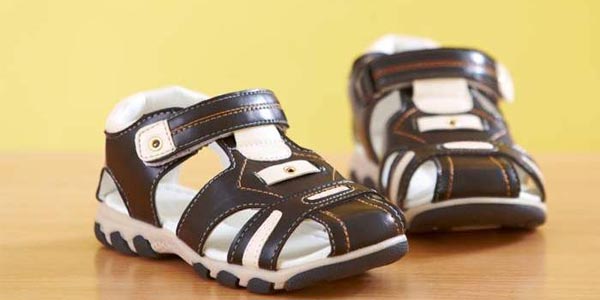SHARE WITH FRIENDS:
It is estimated that more than 65% of children experience flat feet before school age. Probably for this reason, the purchase of orthopedic shoes for children by parents has recently become a "tradition". What is flat feet? So when and for what reason is there a need for such special footwear?
Flatfoot - a disease of the musculoskeletal system. In this case, the flattening of the dome of the calcaneus is observed. The functioning of the musculoskeletal system is impaired.
The main function of the foot is to distribute the weight from the body evenly. It should move like a "spring". On flat feet, this load reduces the load on the knees, hips and waist. Fatigue without moving, headaches - this is exactly the consequence of a load that is not properly distributed.
Rapid foot fatigue, tingling pain in the heel, difficulty in choosing shoes, swelling of the heel, thickening and roughness of the skin in the area of the big toe are early signs of flatulence.
Congenital and acquired forms of flatulence are observed. In children up to 5 years of age, changes in bone shape occur. The tissue is very elongated. As a result, the height of the foot-claw dome changes as the load or weight decreases. The children, who have just begun to walk, spread their legs wide and press their heels inwards. Most parents think that "flatulence is normal in children aged 3-6 years" or "children of this age do not suffer from this disease." This is completely wrong. On the contrary, it is at this age that the treatment of this disease is much more effective. After the age of 10, the effectiveness of treatment is less than 10%. The worst aspect of this disease is that there is no pain and deformity (defect) in the toe. The child's entire locomotor activity is impaired. By treating infants under the age of 5 with this disease, they can be saved from spinal curvature.
To do this, the child should walk barefoot on the ground, asphalt and grass on more hot days. The bottom of the shoes chosen for your child should be thick, the sole should be soft, and the heel should be 1–1,5 cm. Its inner seams should be minimal, made of natural fabric, and its handle should be high and hold the foot firmly. Shoes should be 0,5-1 cm larger, it is necessary to control the change of shoes, taking into account the growth of the foot. It is recommended to wear special orthopedic shoes at such times.
Read more: Stuffed with lettuce leaves

Gut zu wissen, dass die Unterseite der für ein Kind, das an Plattfüßen leidet, ausgewählten Schuhe eine dicke, weiche Sohle haben soll. Mein Neffe leads a Plattfüßen. Mein Onkel wird ihm deshalb Schuhe mit dicker weicher Sohle kaufen.
Gut zu wissen, dass man auch aie die innere und äußere Neigung der Ferse achten sollte und dies auch behandeln lassen sollte. Mein Sohn ebenfalls an Plattfüßen und ich suche aktuell nach einfachen Hilfsmaßnahmen. Da ich gehört habe, dass orthopädische Schuhe im Alltag enorm weiterhelfen, werde ich mich an einen geeigneten Experten dafür wenden.